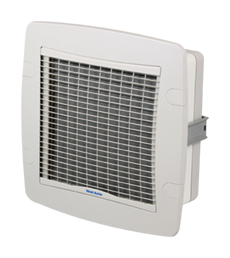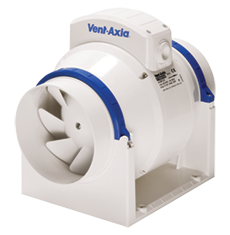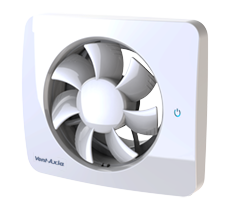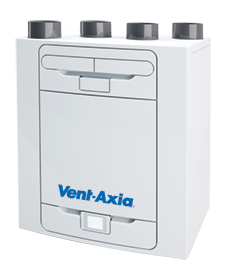Why is Effective Ventilation Important?
With people spending up to 90% of their time indoors, and with growing evidence of pathogens moving around our buildings, there has never been a more important time to make sure a building has effective ventilation since it helps reduce COVID-19 transmission rates indoors. In Fact, the UK Government recently stated “Research shows that being in a room with fresh air can reduce your risk of infection from particles by over 70%, as fresh air dilutes the particles*”. Using ventilation to either introduce, or increase fresh air circulation in the home is therefore central to reducing infection rates. Independent guidance on this has been published by a number of sources:
*SOURCE: SAGE EMG paper, Role of Ventilation in Controlling SARS-CoV-2 Transmission
![]() Government publication ‘Our plan to rebuild: The UK Government’s COVID-19 recovery strategy’
Government publication ‘Our plan to rebuild: The UK Government’s COVID-19 recovery strategy’
Effective ventilation is central to Government guidance. In this document, it advises to “Use external extractor fans to keep spaces well ventilated and make sure that ventilation systems are set to maximise the fresh air flow rate”.
![]() UK Deputy Chief Medical Officer:
UK Deputy Chief Medical Officer:
Professor Jonathan Van-Tam, Deputy Chief Medical Officer confirmed at a COVID-19 briefing on 29th April that ventilation lowers transmission rates from respiratory viruses. “There is a definite truism across all of the science literature, that ventilation is a most critical part of reducing transmission from respiratory viruses.”
![]() Chartered Institution of Building Services Engineers (CIBSE)
Chartered Institution of Building Services Engineers (CIBSE)
CIBSE has published practical industry guidance on ventilation in its document ‘CIBSE COVID-19 Ventilation Guidance’. This explains how ventilation can minimise the risks of airborne transmission of Coronavirus. The general advice is to “increase the air supply and exhaust ventilation, supplying as much outside air as is reasonably possible” to dilute and remove the virus from the air as much as possible.
Be COVID-Aware
If you are installing or servicing ventilation, we can help you understand the key principles. There is guidance available from a range of industry and government bodies, or you can email or call our team on 0844 856 0590 for help and advice.
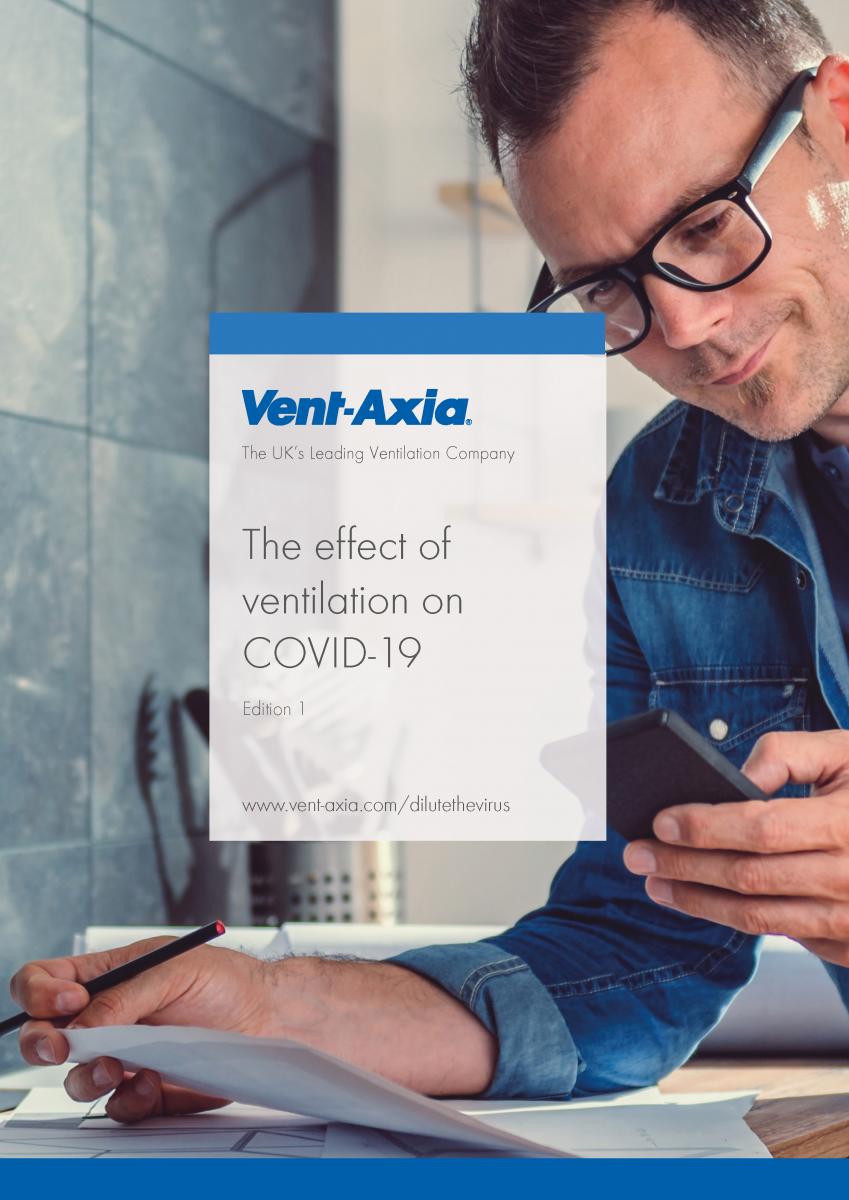
We have produced a helpful guide that can help you understand what you need to consider. Download it here.
The Solution
Vent-Axia has a number of ventilation solutions available to meet most installation requirements, as shown below. If you need any other type of ventilation, please call our helpful team on 0844 856 0590.
Commercial Ventilation
The Lo-Carbon T-Series commercial fan offers high performance ventilation with low running costs. With both window and wall options available it is durable and reliable. Available with four sizes of extract/intake fans and an easy fit connector Top Socket allowing fast and trouble-free mains connection, the T-Series is easy to install and replace.
Inline Ducted Ventilation
For ducted applications, this simple energy efficient ACM Mixed Flow In-Line fans offer quiet ventilation with two and half times the pressure of conventional axial fans. Their compact design also makes them ideal for many ducted applications and they can operate in both horizontal and vertical positions providing supply or extract ventilation.
Residential Bathroom & Kitchen Ventilation
Fans are installed in properties’ wet rooms i.e, bathroom & kitchen and are designed to work intermittently when triggered. The fan turns on when the humidistat is triggered or the light switch is turned on. These types of fans are ideal for everyday use. They are great for basic ventilation needs and also where a lower-cost option is needed.
Heat Recovery Ventilation System
MVHR (mechanical ventilation with heat recovery) is a whole dwelling ventilation system that continuously supplies fresh filtered air and extracts continuously at a low rate with the facility to be boosted as required meeting Building Regulations Part F System 4.
Frequently Asked Questions
What should I do first?
In the first instance it is important to check that any existing ventilation systems are in working order. It is then recommended that, as far as possible the fan is switched to a higher airflow. DO NOT re-circulate air within the building. If there is no ventilation system present, install fans appropriate to the needs of the building.
Should I open my window?
If it is safe to do so, yes. Increasing the airflow through the building will dilute the virus and therefore the risk. We would not recommend opening a window in heavily polluted areas with heavy traffic - especially on the ground floor as heavy diesel particulates will be able to enter the room. People may also choose not to open windows for security reasons. In these instances, ventilation should be installed.
Can I still use heat recovery systems?
This depends on the type of heat recovery system. Rotary heat recovery should be avoided as they are prone to high rates of leakage where the virus could transfer from the exhaust air into the incoming air. Other types of heat recovery such as plate counterflow and crossflow have minimal leakage rates (1-2%) and therefore the risk is much lower.
What about filtration?
Standard filters used in ventilation systems can capture particles as small as pollen and diesel particulates. Virus particles are much smaller than this, so filters are less effective in stopping the virus. HEPA filters are commonly used in specialist applications but are not guaranteed to capture 100% of virus particles. However, it is important to clean or replace filters regularly to ensure they remain effective and that they don't impede the running of the ventilation system - this, in turn, will impact the effectiveness of the ventilation system.
Should I clean the ductwork?
No changes are needed to the regular cleaning and maintenance schedule for ductwork. This is because viruses attached to small particles will not deposit easily in ventilation ducts and will normally be carried out by the airflow. It is more important that the ventilation rate is increased to bring in fresh air and reduce exposure.
Watch Videos
Professor Jonathan Van-Tam, Deputy Chief Medical Officer explains the vital role ventilation will play in mitigating the threat of the virus when indoors.
Prime Minister Boris Johnson announces pubs can re-open from 4th July – but only with mitigation, such as improving ventilation amongst others, in place.
Watch this video and see how we can all reduce the coronavirus risk during domestic work.
WHO’s Dr Maria Neira explains how important is ventilation and how does it keep you safe from COVID-19.
Watch Government guidance on how to reduce the risk of catching COVID-19 indoors by up to 70%.
Independent Guidance
CIBSE is an international professional engineering association which has issued two documents providing guidance on how to use ventilation to tackle COVID-19 in buildings.
The UK Government’s COVID-19 recovery strategy was published on 11 May and is the Government’s COVID-19 return to work strategy which aims to outline steps to make returning to work as safe as possible.
ASHRAE is The American Society of Heating, Refrigerating and Air-Conditioning Engineers. It updated its Position Document on Airborne Infectious Diseases in February 2020
REHVA is The Federation of European Heating, Ventilation and Air Conditioning Associations and has provided guidance on ‘How to operate HVAC and other building service systems to prevent the spread of the coronavirus (SARS-CoV-2) disease (COVID-19) in workplaces’. RHEVA have also developed a calculator to estimate the effect of ventilation on COVID-19 airborne transmission for use when specifying ventilation systems.
The British Medical Journal highlights the need for added emphasis on ventilation because the tiniest suspended particles can remain airborne for hours, and these constitute an important route of transmission.

